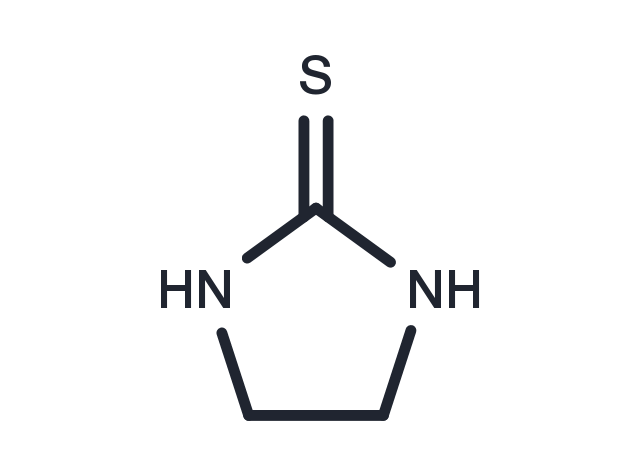Powder: -20°C for 3 years | In solvent: -80°C for 1 year


Ethylene thiourea (NCIC03372) is a pesticide used in fruit and vegetable production. Ethylene thiourea is also used as a novel contrast agent for MRI studies based on proton chemical exchange-dependent saturation transfer.

| Pack Size | Availability | Price/USD | Quantity |
|---|---|---|---|
| 10 g | In stock | $ 29.00 | |
| 1 mL * 10 mM (in DMSO) | In stock | $ 45.00 |

| Description | Ethylene thiourea (NCIC03372) is a pesticide used in fruit and vegetable production. Ethylene thiourea is also used as a novel contrast agent for MRI studies based on proton chemical exchange-dependent saturation transfer. |
| Synonyms | ETU, Imidazolidinethione, NCI C03372, NCIC03372, NCI-C03372 |
| Molecular Weight | 102.16 |
| Formula | C3H6N2S |
| CAS No. | 96-45-7 |
Powder: -20°C for 3 years | In solvent: -80°C for 1 year
DMSO: 55 mg/ml (538.37 mM)
You can also refer to dose conversion for different animals. More
bottom
Please see Inhibitor Handling Instructions for more frequently ask questions. Topics include: how to prepare stock solutions, how to store products, and cautions on cell-based assays & animal experiments, etc.
Ethylene thiourea 96-45-7 Others ETU NCI-C-03372 Imidazolidinethione NCI C 03372 NCI C03372 NCI C-03372 NCIC03372 NCI-C03372 NCIC-03372 NCI-C 03372 NCIC 03372 inhibitor inhibit
